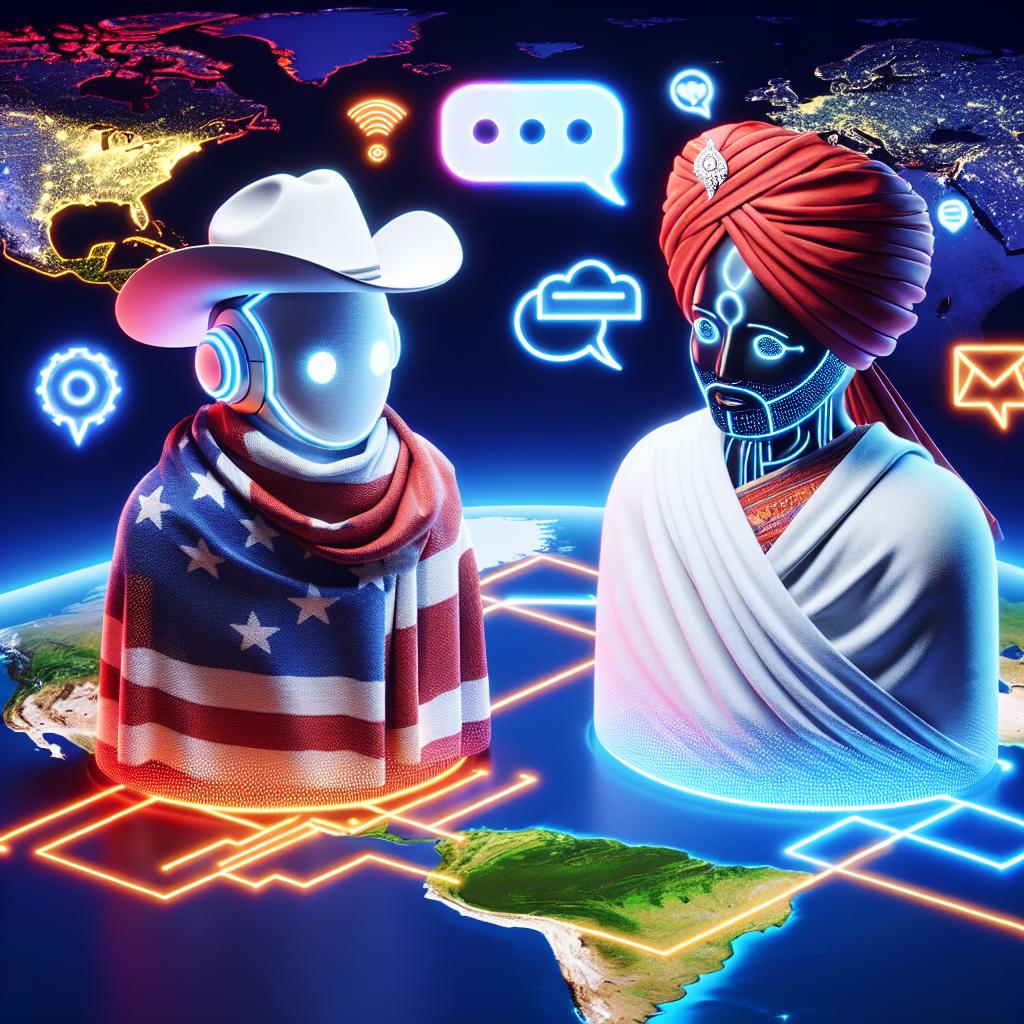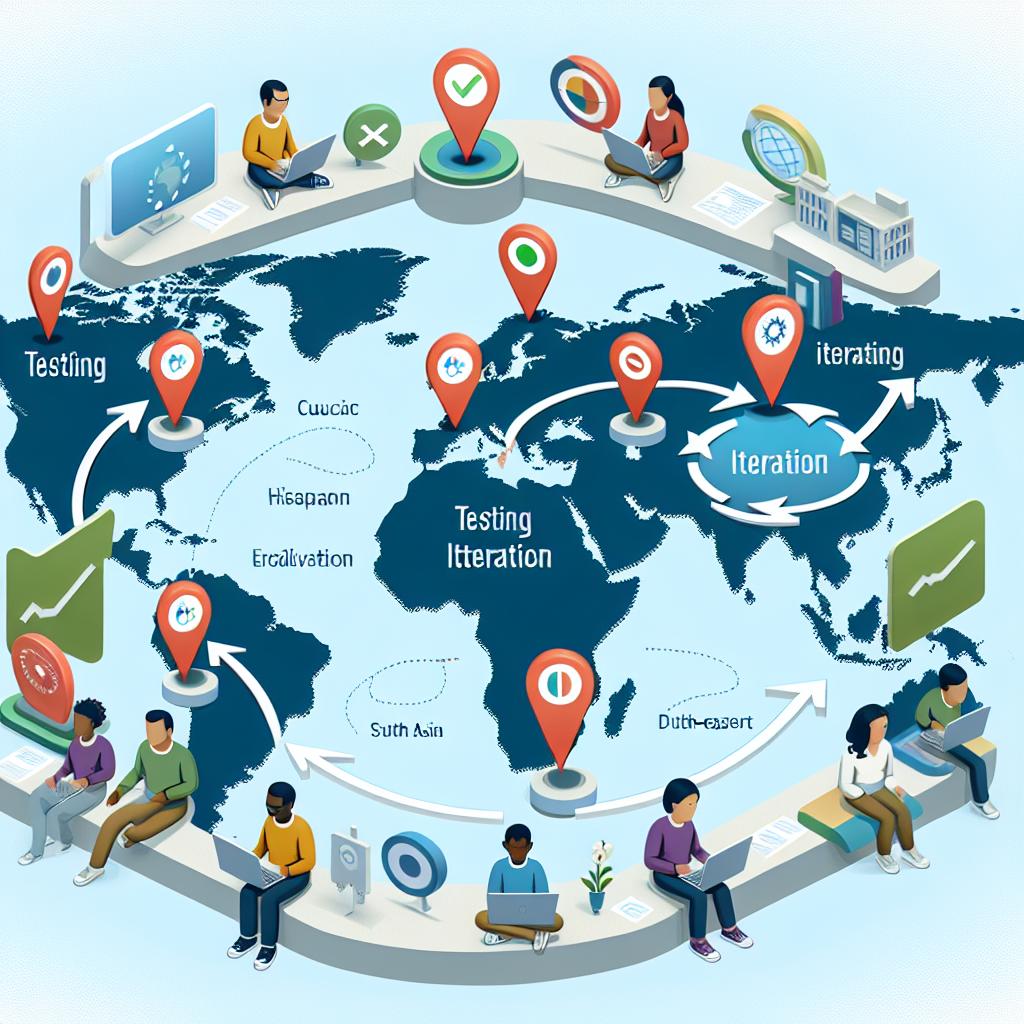Welcome to the fascinating world of chatbot localization, where technology meets culture in the most delightful way! Imagine striking up a conversation with a friendly virtual assistant, only to realize it speaks your language—not just in terms of words, but in spirit, humor, and understanding. As businesses expand their reach across global markets, the art of customizing chatbot interactions to resonate with diverse audiences has never been more crucial. In this article, we’ll explore how savvy brands are transforming their chatbots from generic assistants into personalized companions, carefully tailored to fit the nuances of various cultures, preferences, and languages. Get ready to embark on a journey that highlights the importance of localization in creating meaningful connections through conversational AI, and discover how a little customization can make a world of difference!
Understanding Cultural Nuances in Chatbot Localization
To effectively localize chatbots, it’s crucial to dive beneath the surface and grasp the subtle cultural nuances that can significantly impact user interactions. Understanding local idioms, expressions, and informal language often used in conversations can create a more relatable and engaging experience for users. A few considerations to keep in mind include:
- Language Sensitivity: Tailor the tone and vocabulary to match the cultural context. For example, using formal language in cultures that value hierarchy.
- Local References: Incorporate local customs, traditions, and popular culture into responses to enhance relatability.
- Humor and Sarcasm: Recognize when humor is appropriate, as it may differ vastly across cultures.
- Directness vs. Indirectness: Some cultures prefer straightforward communication, while others might lead with a more subtle approach.
Furthermore, developing an understanding of local user behavior and preferences is vital. This involves not just language, but also understanding regional etiquette and values. A useful tool to visualize these differences is a comparative table highlighting chatbot localization tips across various markets:
| Market | Communication Style | Key Phrases |
|---|---|---|
| United States | Direct and informal | “What’s up?” “No worries!” |
| Japan | Polite and indirect | “It would be appreciated if…” |
| Germany | Formal and precise | “Could you please confirm?” |
| Brazil | Warm and friendly | “Tudo bem?” |
By integrating these cultural insights, companies can not only enhance the functionality of their chatbots but also foster a deeper connection with users, encouraging trust and engagement in an increasingly global marketplace.

Tailoring Language and Tone: Finding the Right Voice
When localizing a chatbot, it’s essential to consider not just the language but also the cultural nuances that influence how people communicate. Choosing the right expressions, slang, and idiomatic phrases can significantly enhance the user experience. Engagement often hinges on how well the chatbot can mimic the friendly banter of its users. To accomplish this, developers should:
- Research local dialects and phrases.
- Understand cultural references and humor.
- Adapt tone to match local expectations—whether formal, relaxed, or playful.
Implementing the appropriate voice can also mean evaluating your target demographic’s preferences. A younger audience might appreciate a more casual tone, while corporate users may respond better to professionalism. Furthermore, the chatbot’s response time and complexity of language should cater to the user’s comfort. Here’s a simple table that illustrates different tones suited for various markets:
| Target Market | Preferred Tone | Characteristics |
|---|---|---|
| Tech Savvy Millennials | Casual & Fun | Use of emojis, slang, and pop culture references |
| Corporate Clients | Professional & Direct | Formal language, clear and concise information |
| Healthcare Sector | Empathetic & Supportive | Reassuring language and sensitive phrasing |

Navigating Regional Preferences: Customizing User Experiences
To effectively connect with users in diverse markets, it’s essential to understand the regional nuances that shape their preferences. Customizing user experiences involves more than just translating language; it requires a deep dive into local culture, values, and behavioral trends. Consider the following aspects when tailoring chatbot interactions to specific audiences:
- Language Variations: Use local dialects and slang to resonate with users.
- Cultural References: Incorporate regional holidays, traditions, and popular media.
- Date and Time Formats: Adjust to local conventions to ensure clarity.
- Currency and Units: Utilize local currency and measurement systems for relevance.
Moreover, deploying A/B testing to analyze user interactions can provide valuable insights into which customized approaches yield the best engagement rates. By establishing feedback mechanisms and incorporating user suggestions, businesses can refine their chatbot capabilities continuously. Here’s a simple comparison of essential features that can be localized:
| Feature | Importance | Localization Example |
|---|---|---|
| Greeting Messages | First impressions count | “Hola!” in Spanish markets |
| Response Tone | Builds rapport | Formal in Japan vs. casual in the USA |
| Problem-Solving Questions | Enhances user satisfaction | Local issues in tech support |

Testing and Iterating: The Key to Successful Localization
When it comes to effective localization, the journey doesn’t end with the initial rollout. It’s essential to test and gather feedback from users in diverse regions to refine the chatbot experience continually. Engage with local users through surveys and usability tests to capture insights about language preferences, cultural nuances, and common inquiries. This feedback will guide you in making targeted adjustments to your chatbot that resonate with different audiences. Factors to consider during testing include:
- Language Accuracy: Ensure translations are not only correct but also contextually appropriate.
- Cultural Relevance: Tailor responses and examples to align with local customs and behaviors.
- User Experience: Assess navigation ease and response times to ensure an intuitive interaction.
Once initial testing is done, iterating on user feedback is crucial for ongoing improvement. Implement a robust analytics framework to monitor engagement metrics, such as retention rates and conversation drop-off points. This data can reveal trends and pain points, allowing for timely updates. Consider using a simple dashboard like the one below to track important localization milestones:
| Localization Aspect | Status | Next Steps |
|---|---|---|
| Language Updates | In Progress | Final Review |
| User Feedback Collection | Active | Analyze Results |
| Feature Adjustments | Pending | Prioritize Changes |
By maintaining a cycle of testing and iterating, your chatbot can evolve in tandem with the changing needs and preferences of your global users, ensuring a delightful and relevant conversational experience.
Closing Remarks
As we wrap up our exploration of chatbot localization, it’s clear that creating meaningful connections with diverse audiences is not just a trend; it’s a necessity. By customizing conversations for different markets, businesses can transcend language barriers and cultural nuances, ultimately fostering more engaging and effective customer interactions.
Think of your chatbot as a world traveler—an ambassador of your brand, ready to greet users in their native tongue and cultural context. It’s an exciting journey where every adjustment, from dialects to humor and relevant references, can transform a simple interaction into a delightful experience.
So, are you ready to embark on the localization adventure? By embracing the unique characteristics of each market, you have the power to turn a chatbot into a true conversational companion. Remember, the world is a vast tapestry of cultures and languages, and with every localized chatbot conversation, you’re not just speaking to users; you’re building community, trust, and loyalty.
As you navigate this ever-evolving landscape, we encourage you to stay curious, open, and innovative. Happy localizing, and may every conversation lead to wonderful connections!

